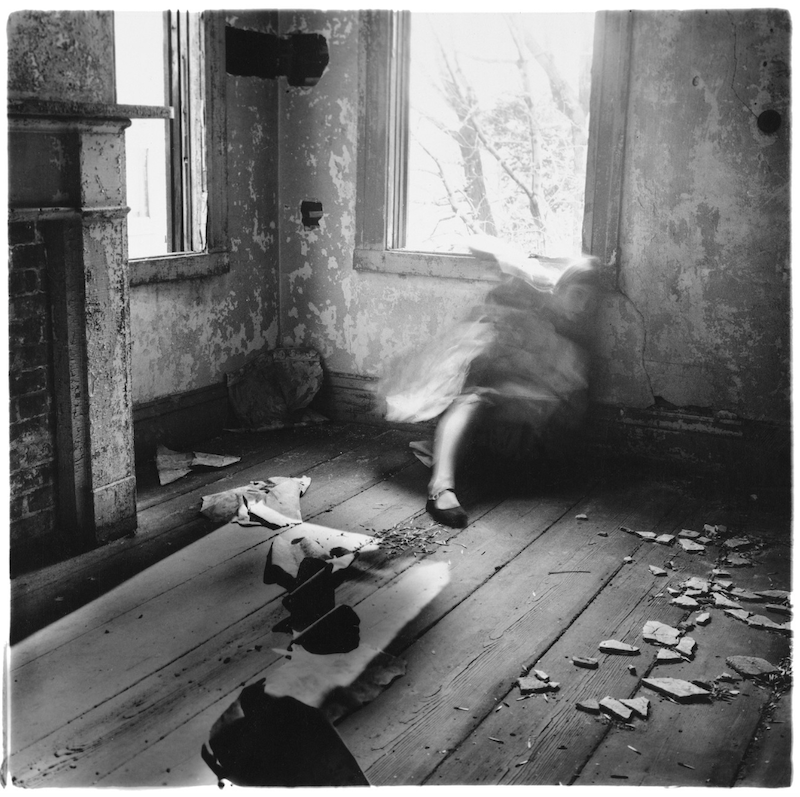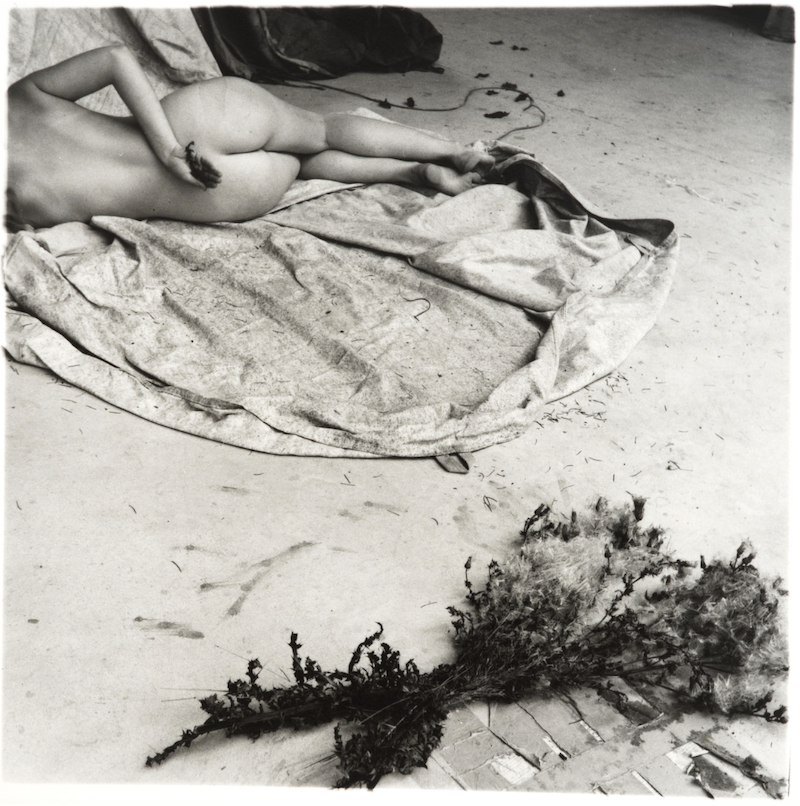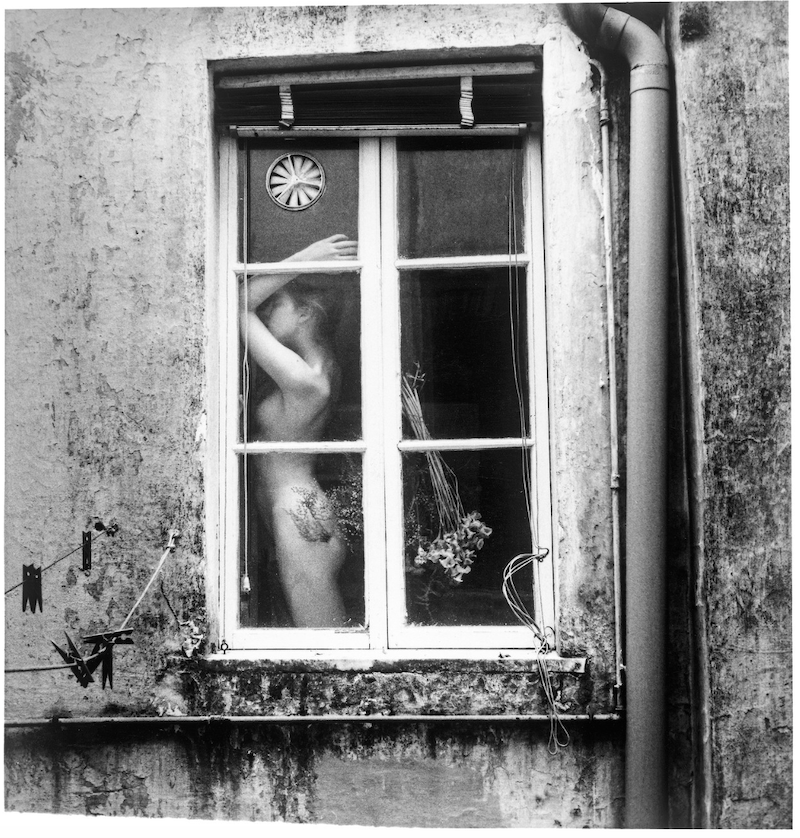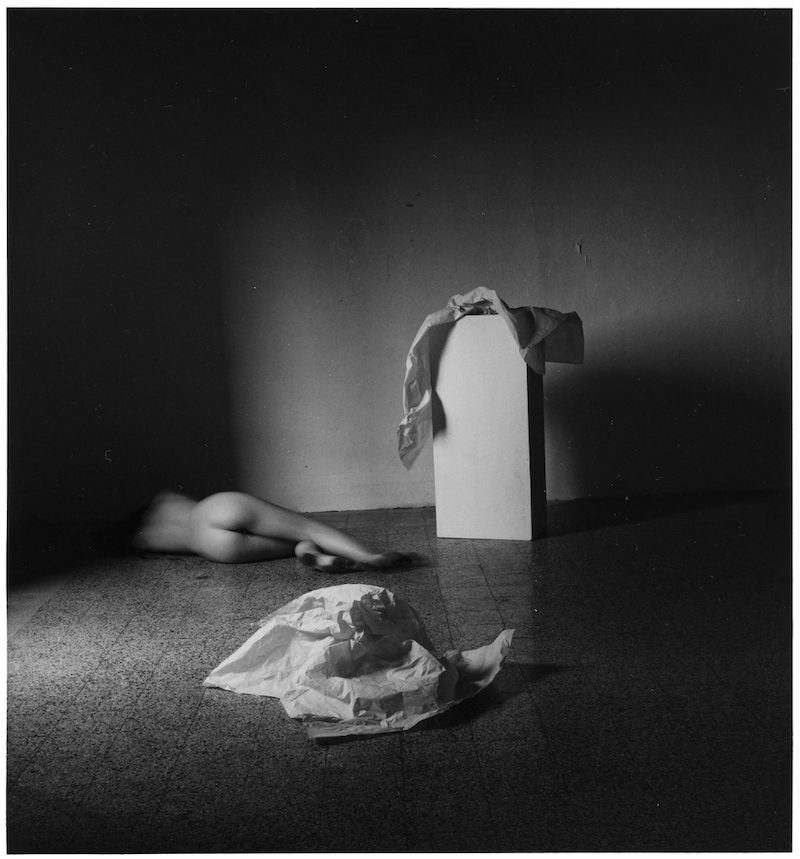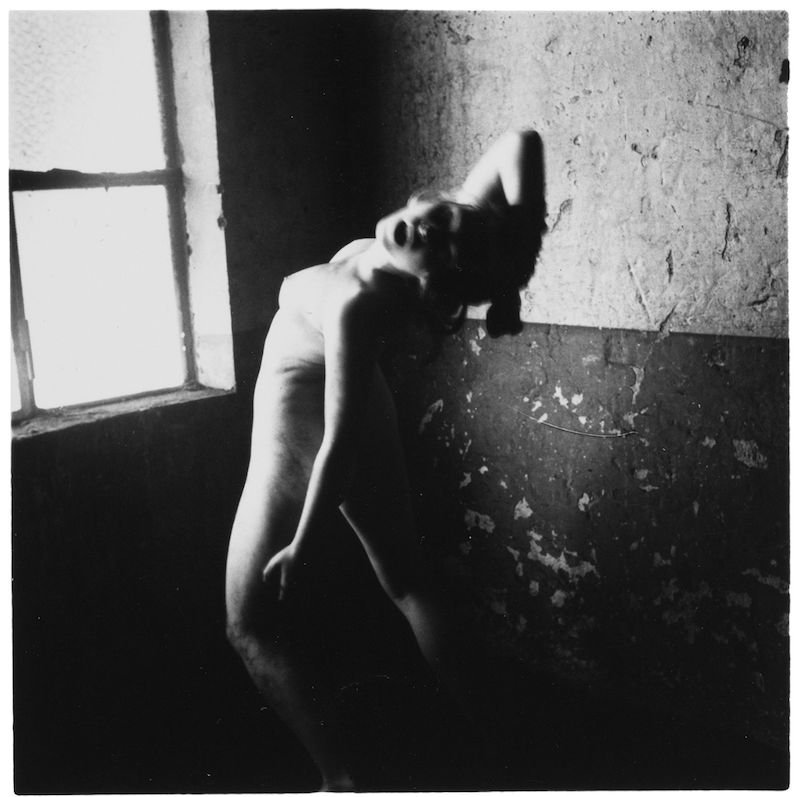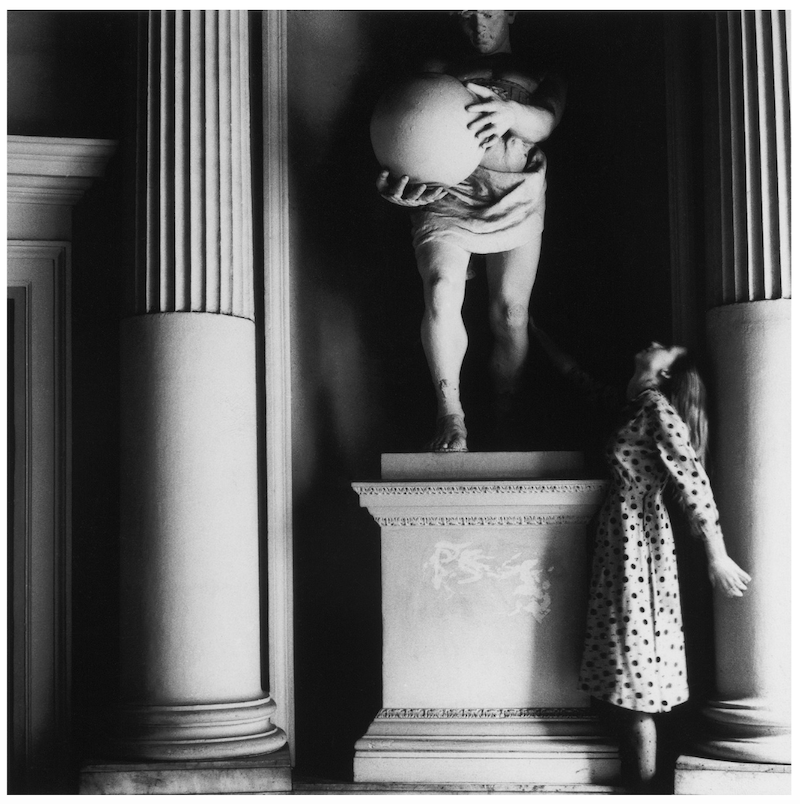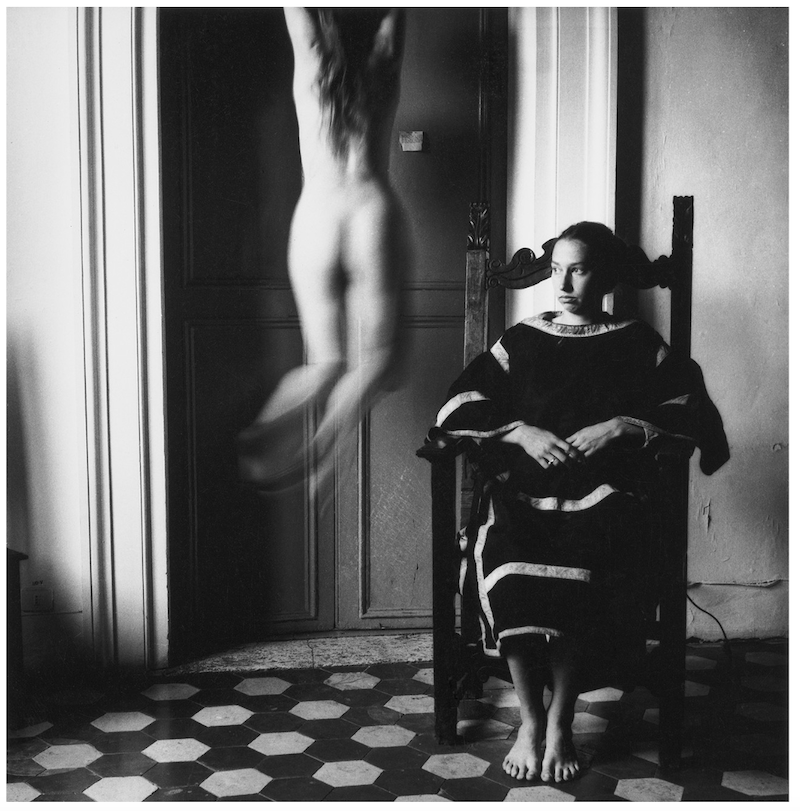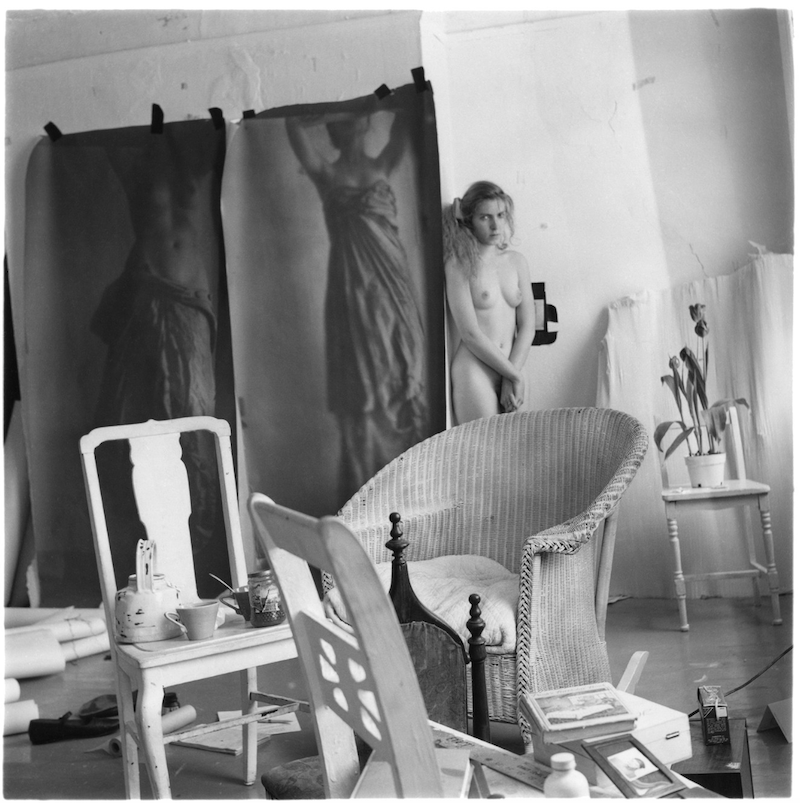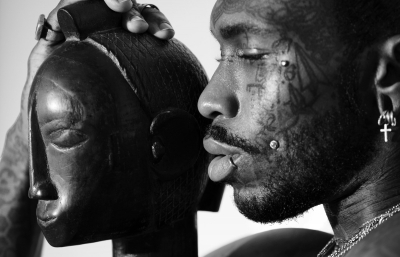Gagosian is pleased to announce its inaugural exhibition of works by Francesca Woodman, on view at their West 24th Street, New York space through April 27, 2024. The showase features more than fifty lifetime prints—many of which have not been previously exhibited—including Blueprint for a Temple (II) (1980), the largest work she accomplished.
The exhibition presents key prints from approximately 1975 through 1980. Photographing in Providence, Rhode Island; Rome; Ravenna, Italy; and New York, Woodman situated herself and others within dilapidated interiors and ancient architecture to compose her tableaux. Using objects such as chairs and plinths along with architectural elements including doorways, walls, and windows, she staged contrasts with the performative presence of the figures, presenting the body itself as sculpture. In the Self-Deceit series (1978), she photographed herself nude in a room with crumbling walls, standing, crawling, or crouching with a frameless mirror. Through compositional fragmentation and blurring, Woodman throws into question the conceit that photography offers a revelation of the self.
On view for the first time since spring 1980, when it was included in Beyond Photography 80, a group exhibition at the Alternative Museum in New York, Blueprint for a Temple (II) is a collage assembled from twenty-four diazotype elements and four gelatin silver prints. Using diazotype, a medium typically employed to create architectural blueprints, allowed Woodman to work at a monumental scale. The composition depicts the right half of a temple façade and features four caryatids—female figures who form columns in classical architecture. The most famous examples of these features are on the Erechtheion at the Acropolis in Athens, which Woodman visited multiple times.
Made together with her Caryatid photographs (1980) and printed in sepia and inky blue diazotype, this work is one of two large-scale compositions realized. Blueprint for a Temple (I) (1980), now in the collection of the Metropolitan Museum of Art, New York, has a related composition. Approximately life-size, the four figures in Blueprint for a Temple (II) support an entablature and pediment assembled from photographs of tile mosaics, the claw feet of a tub, and other bathroom fixtures taken in friends’ New York City apartments, likely the same friends who posed as Woodman’s caryatids. Below the figures is a print joining multiple head profiles and a figure with arms occluded by marks Woodman made on its negative. On the work’s lower right are gelatin silver prints taken in bathrooms and a diazotype print that functions as a proposal or diagram of the work through sketches, photographs, and the following inscription:
Project A Blueprint for a Temple
For a temple of contemplative classical proportions
made out of classically inspired fragments of
its modern day counterpart the bathroom
Bathrooms with classical inspiration are often found in
the most squalid and chaotic parts of the city. They
offer a note of calm and peacefulness like
their temple counterparts offered to wayfarers
in Ancient Greece
A culmination of Woodman’s representation of the figure in space, the Blueprint for a Temple works prompt consideration of how she drew on classical themes throughout her career. In an untitled photograph made in 1978 at the Pastificio Cerere in Rome, a headless, half-dressed figure leans against an aged wall, her arms behind her back, emphasizing her torso. With her skirt sitting low on her waist and blurred by a gentle movement captured by the camera, the photograph anticipates Woodman’s preoccupation with caryatids and the body as sculpture. The same can be seen in earlier works, such as From Space² or Space² (1976), in which a figure emerges from behind torn wallpaper. As the artist noted around 1976–77, “I’m interested in the way that people relate to space. The best way to do this is to depict their interactions to the boundaries of these spaces. Started doing this with [ghost] pictures, people fading into a flat plane—ie becoming the wall under wallpaper or of an extension of the wall onto floor.”
A catalogue will accompany the exhibition, with an essay by Brooke Holmes, the Susan Dod Brown Professor of Classics at Princeton University. A public conversation between Holmes and Lissa McClure and Katarina Jerinic of the Woodman Family Foundation will take place in the gallery on April 17.
The exhibition in New York coincides with Francesca Woodman and Julia Margaret Cameron: Portraits to Dream In, a major survey at the National Portrait Gallery in London, on view from March 21 to June 16, 2024, before traveling to IVAM Institut Valencià d’Art Modern, Spain. With over 150 prints spanning the careers of both artists, the exhibition explores thematic affinities between two influential photographers who worked a century apart. A selection of Woodman’s photographs will also be presented by Gagosian at Burlington Arcade, London through April 6, 2024.
All images © Woodman Family Foundation/Artists Rights Society (ARS), New York and on view at @gagosian through April 27, 2024



